Common and plantar warts (verrucae)
Swift provides an effective solution for common and plantar warts. Hundreds of thousands of people across the world have had their warts treated and cured with Swift, some of which had suffered with their lesions for decades.
"I can't believe it has gone! I thought I would be stuck with it forever.
I'm so glad that horrible painful thing has gone from my foot,
I'm absolutely delighted."
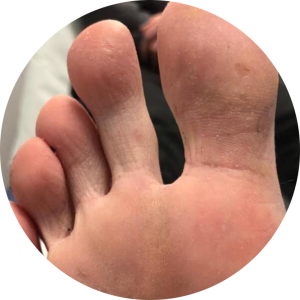
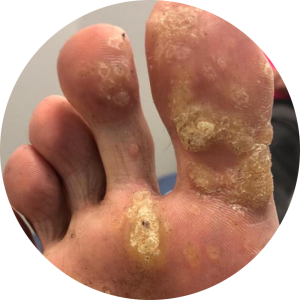
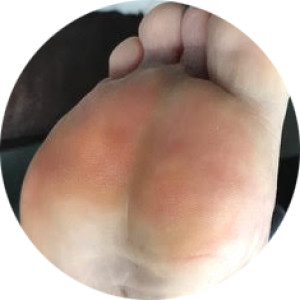
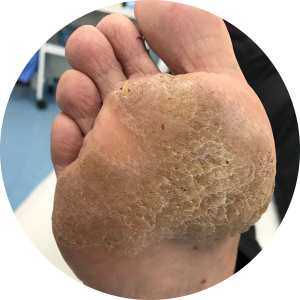
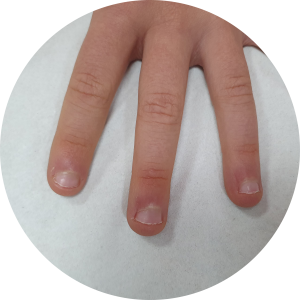
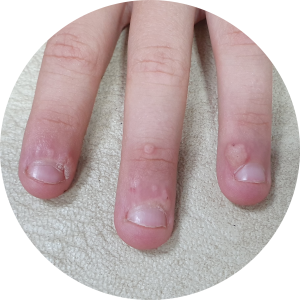
What causes common and plantar warts?
Warts are benign skin lesions caused by the human papillomavirus (HPV).
There are over 200 types of HPVs which infect the "normal" cutaneous and/or mucosal skin (mouth and throat, cervix) (NCI, 2022). Over time, they cause the development of warts in the skin, genital organs and upper respiratory tract.
An estimated 40% of the population is infected with HPV and in approximately 7-12% a wart develops (Witchey et al., 2018).
Small microscopic wounds in the skin, caused by injury or intense pressure, allows for HPV to enter and invade specialised skin stem cells located at the bottom of the top layer of the skin called the epidermis. These stem cells, called keratinocytes, will actively divide and mature as they travel towards the surface of the skin. Meanwhile, HPV have evolved many ways in which to avoid detection by the immune system, allowing the virus to replicate within the infected cell while at the same time enhancing the cell’s own multiplication rate (Longworth & Laimins, 2004).
This increased cellular growth of HPV-infected cells gives rise to the hard papule and comprises the wart.
How do they spread?
Viral particles that have reached the surface of the skin are released into the environment via normal shedding of the outermost skin cells. From there, the virus can either spread to a new host by touching contaminated surfaces or re-enter the same host at sites adjacent to the existing wart, causing the formation of wart clusters (Witchey et al., 2018). Therefore, the dominant risk factors are:
- having a pre-existing wart
- being in close contact with someone who has a pre-existing wart
Additional risk factors include walking barefoot, frequent shared communal showers and pool decks, and close contact sports.
What happens if they are left untreated?
Spontaneous resolution of warts occurs in approximately 40% of people over the course of 2 years, however this depends highly on several co-factors such as age (more likely to clear in children), HPV type, host immunity, or site of infection (Ringin, 2020).
Warts that do not resolve on their own continually pose a risk of re-infection at other sites and transmission to other people.
They can also potentially become painful due to pressure that may be exerted onto the lesion, causing it to progress deeper into the skin (Witchey et al., 2018).
Longworth, M. S., & Laimins, L. A. (2004). Pathogenesis of Human Papillomaviruses in Differentiating Epithelia. Microbiology and Molecular Biology Reviews, 68(2), 362-372. https://doi.org/10.1128/mmbr.68.2.362-372.2004
NCI. (2022, September 12). HPV and Cancer. https://www.cancer.gov/about-cancer/causes-prevention/risk/infectious-agents/hpv-and-cancer
Ringin, S. A. (2020). The Effectiveness of Cutaneous Wart Resolution with Current Treatment Modalities. Journal of Cutaneous and Aesthetic Surgery, 13(1), 24-30. https://doi.org/10.4103/JCAS.JCAS_62_19
Witchey, D. J., Witchey, N. B., Roth-Kauffman, M. M., & Kauffman, M. K. (2018). Plantar Warts: Epidemiology, Pathophysiology, and Clinical Management. The Journal of the American Osteopathic Association, 118(2), 92. https://doi.org/10.7556/jaoa.2018.024
Is Swift right for you?
Our ROI calculator to allows you to see the impact that Swift could have on your revenue.
Use our calculator to see how many treatments you would have to carry out to break even each month, at what point you will start generating revenue, or for a full breakdown of clinic revenue and gross profit.
 Deutschland
Deutschland  United States
United States  UK & Ireland
UK & Ireland